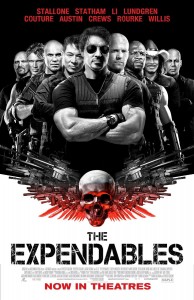 Terry Gilliam is one strange dude. Â His films run the gamut from entertaining to head-scratching to cerebral to just plain nut-job. Â He’s not exactly a household name, though chances are most people have seen at least one of his movies or remember at least one of his sketches from the heyday of Monty Python. Â A visionary he certainly is, though, and after a few decades of filmmaking he tried to get a production of the classic Spanish novel Don Quixote off the ground. Â Lost in La Mancha is a story of how the entire production of The Man Who Killed Don Quixote went down, from the early stages of preproduction to the final nail in the coffin, and even though Gilliam’s movie never did get finished, directors Keith Fulton and Louis Pepe were able to craft an astonishing documentary that chronicles the entire production. Â In doing so we are treated to an intimate look at the process of getting a big-budget Hollywod motion picture brought to life, and how sometimes even the sharpest vision and strongest determination just can’t make a project work.
Terry Gilliam is one strange dude. Â His films run the gamut from entertaining to head-scratching to cerebral to just plain nut-job. Â He’s not exactly a household name, though chances are most people have seen at least one of his movies or remember at least one of his sketches from the heyday of Monty Python. Â A visionary he certainly is, though, and after a few decades of filmmaking he tried to get a production of the classic Spanish novel Don Quixote off the ground. Â Lost in La Mancha is a story of how the entire production of The Man Who Killed Don Quixote went down, from the early stages of preproduction to the final nail in the coffin, and even though Gilliam’s movie never did get finished, directors Keith Fulton and Louis Pepe were able to craft an astonishing documentary that chronicles the entire production. Â In doing so we are treated to an intimate look at the process of getting a big-budget Hollywod motion picture brought to life, and how sometimes even the sharpest vision and strongest determination just can’t make a project work.
Perhaps the most apt comparison I could make with Lost in La Mancha is to Spinal Tap, but whereas the latter was a chronicle of the fictional exploits of a heavy metal rock band with the purpose of poking fun at the whole music scene, La Mancha is, sadly, an all-too-true tale of how crazy things can get during a movie production. Like Quixote himself, Gilliam is consumed by a desire to make his film no matter how irrational it might be. The project, the most expensive movie ever to be filmed in Spain, had to be cut drastically from its initial projections in order to come in under budget. But such woes are the beginning of Gilliam’s troubles. Preproduction is beset by scheduling conflicts, prop disasters, and location issues, but the crew forge ahead nonetheless with a hopeful optimism and desire to see it through to completion.

From the very first day of filming, though, the hassles just continue to pile up. Fighter jets flying overhead disrupt the initial shots, and a rainstorm that night literally washes thousands of dollars of film equipment down the drain. And when Jean Rochefort, who plays Quixote, develops health problems that prevent him from riding a horse, it’s clear the writing is on the wall. And yet Gilliam and his crew forge ahead, shooting scenes with Johnny Depp, posing for group photos with the project’s financial backers, and scrambling to adjust schedules to accommodate Rochefort’s continuing health issues. Christopher Guest himself couldn’t make this stuff up if he tried, folks. It’s as heartbreaking as it is entertaining, and through it all is Terry Gilliam–the indomitable visionary who will do everything in his power to make the film come together.
The strength of La Mancha is how Fulton and Pepe treat their subject with such a deft hand. Neither overly melodramatic nor overly lighthearted, they simply show the events as they unfold.  Bits of footage that did get filmed, screen tests of the giants, magnificent costumes, and the exuberance of Johnny Depp as he gives 100% to a part that even he knows is never going to end up in theatres, hints at the fantastic Movie That Could Have Been.  The determination of Gilliam and his crew to accomplish the impossible against all odds, even when it’s pretty obvious that the film is really not going to get finished, is admirable but drenched with an undertone of foreboding and even sadness.  Gilliam’s undaunted spirit is well-nigh inspirational, though, and even though his Quixote film eventually gets canned, the experience, as anyone who watches Lost in La Mancha, was certainly not without merit.  And besides, word has it Gilliam is even planning to give it another shot…if things don’t fall apart again.
Rating:[Rating:4/5]




















